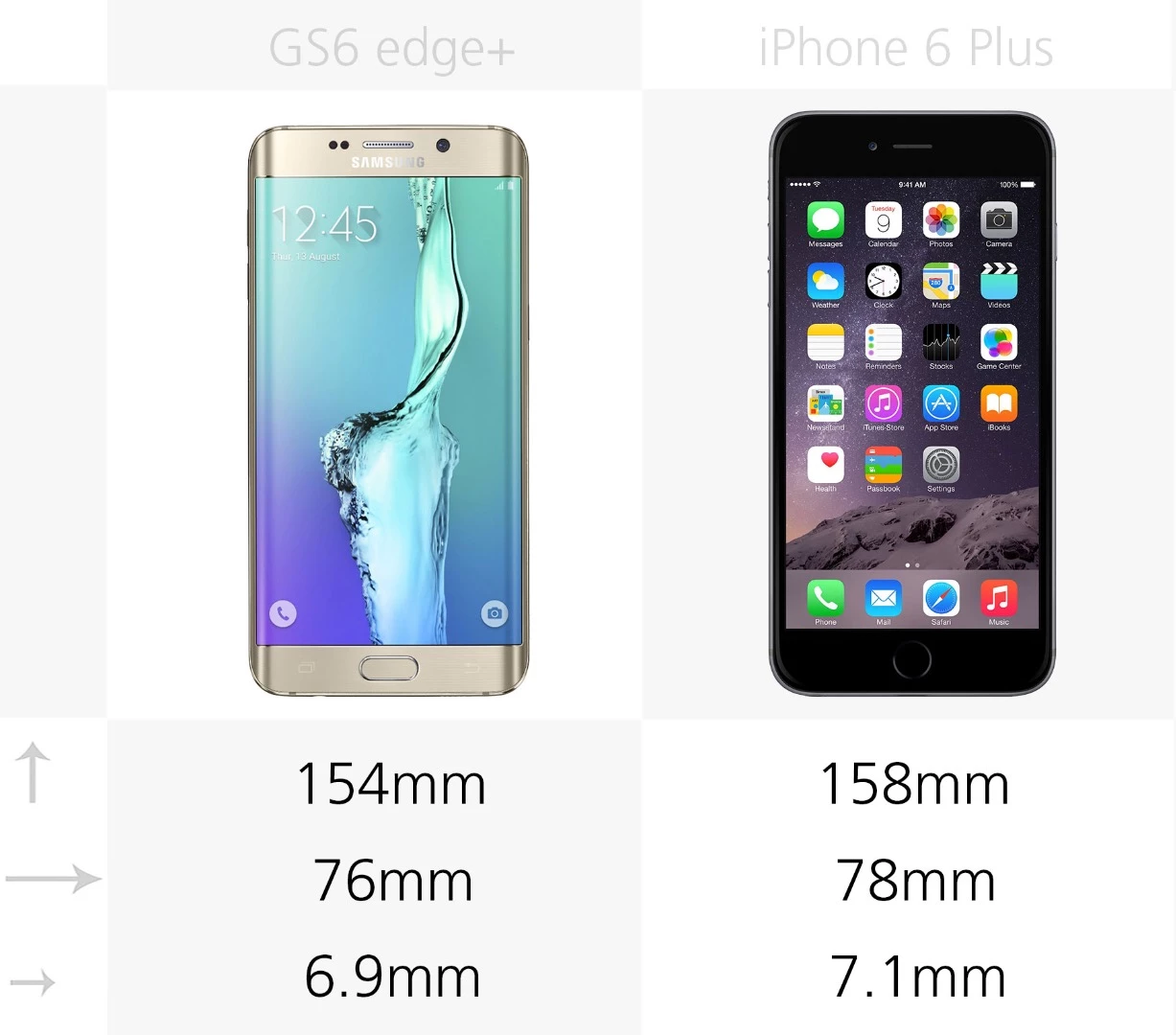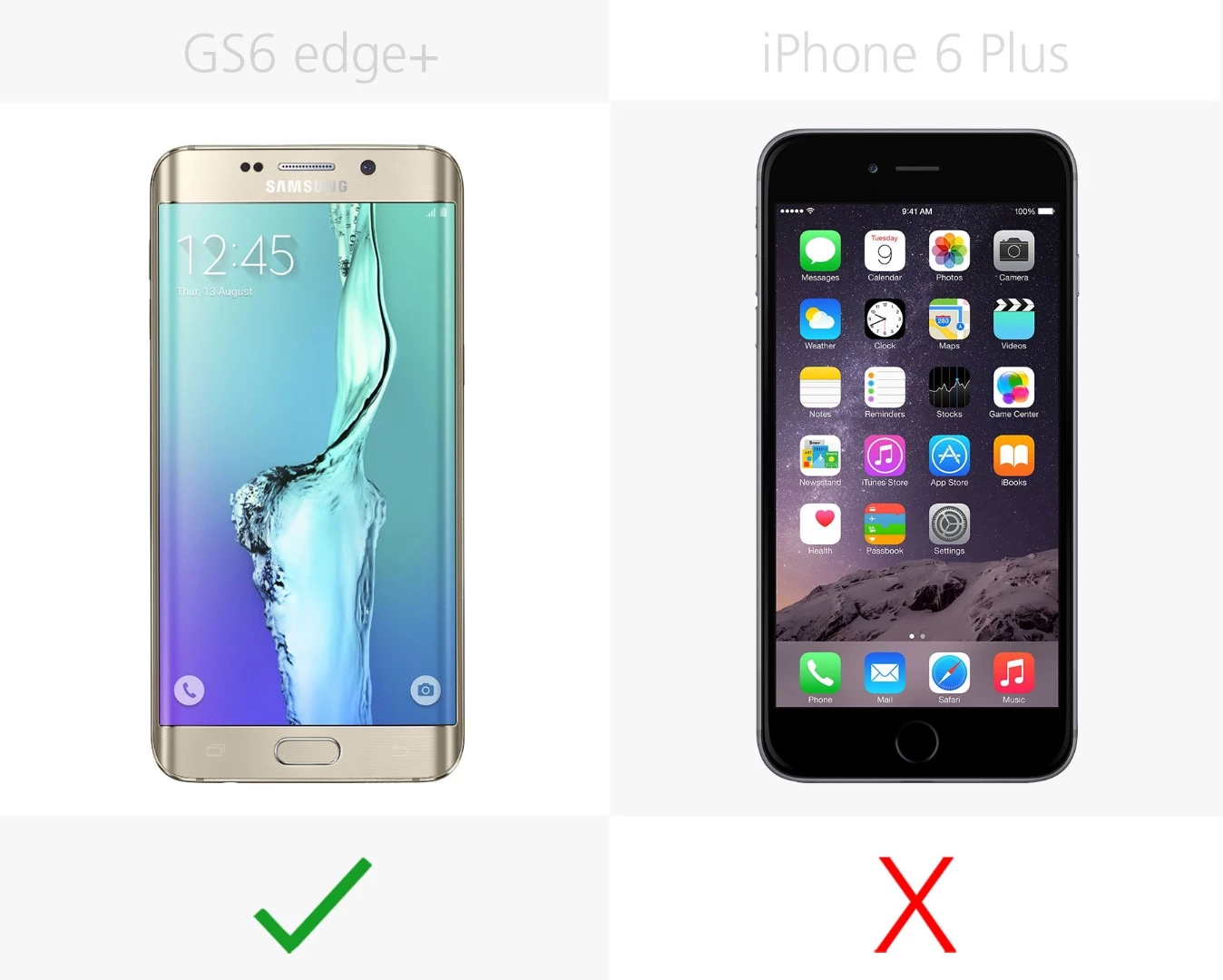After reviewing the Galaxy S6 edge+, we've become fans of its gorgeous outside and cutting-edge hardware on the inside. Let's see how it compares to the (soon to be replaced) iPhone 6 Plus.
Size

Phablets are all big, but Samsung's gives you a smaller build with a bigger screen (more on that in a minute). Specifically, the Galaxy S6 edge+ is 3 percent shorter, 3 percent narrower and 3 percent thinner.
Build (back)
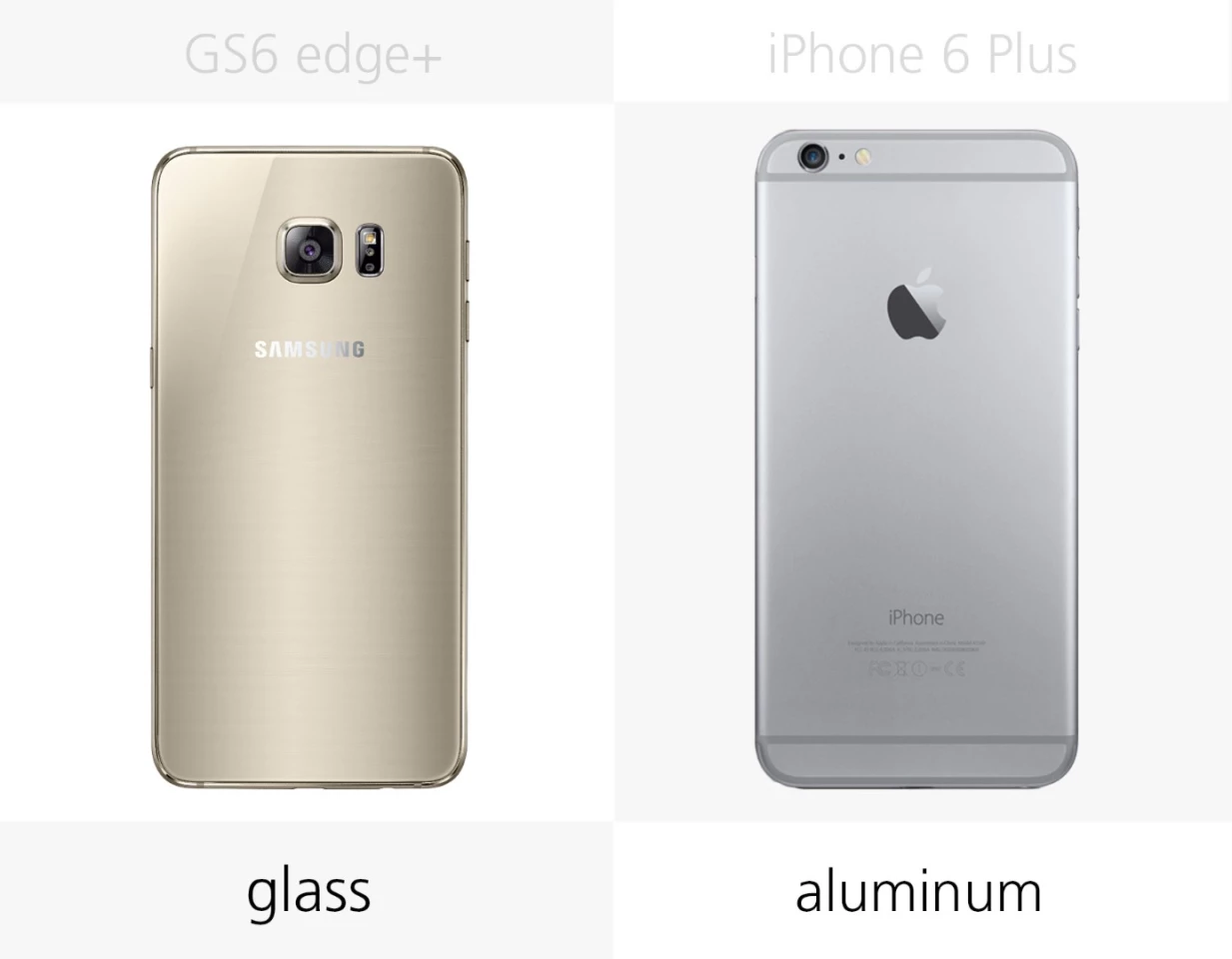
You won't find any cheap materials on either handset; both are full premium affairs.
Like Samsung's other 2015 flagships, the Galaxy S6 edge+ has a smooth Gorilla Glass 4 back.
Build (frame)
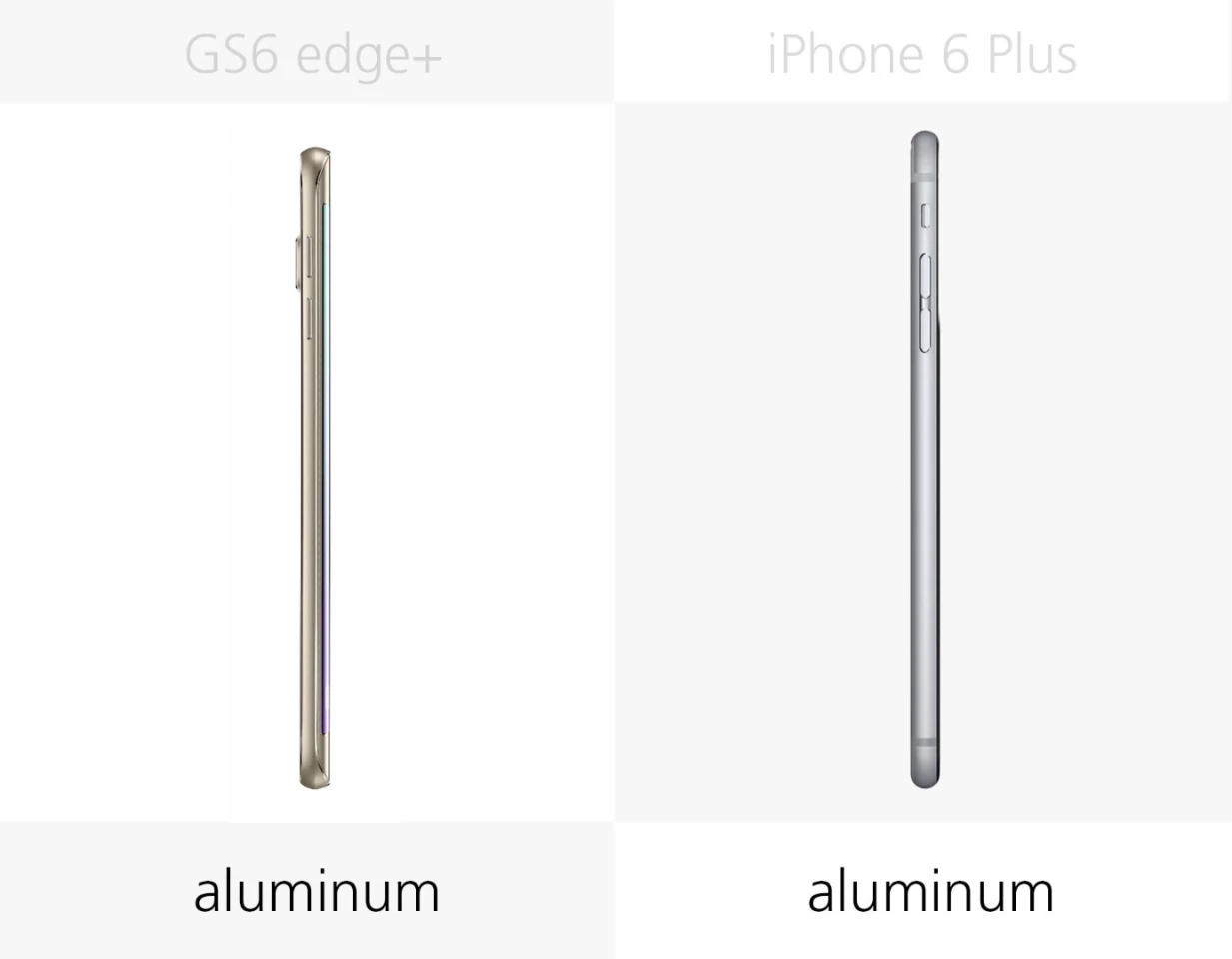
Both phones' sides are made of aluminum (and in the iPhone's case, there's no separation between back and frame).
Colors

Samsung will eventually offer four color options for the Galaxy S6 edge+ (somewhere), but so far US carriers are only stocking the gold (pictured) and black variants.
Display size
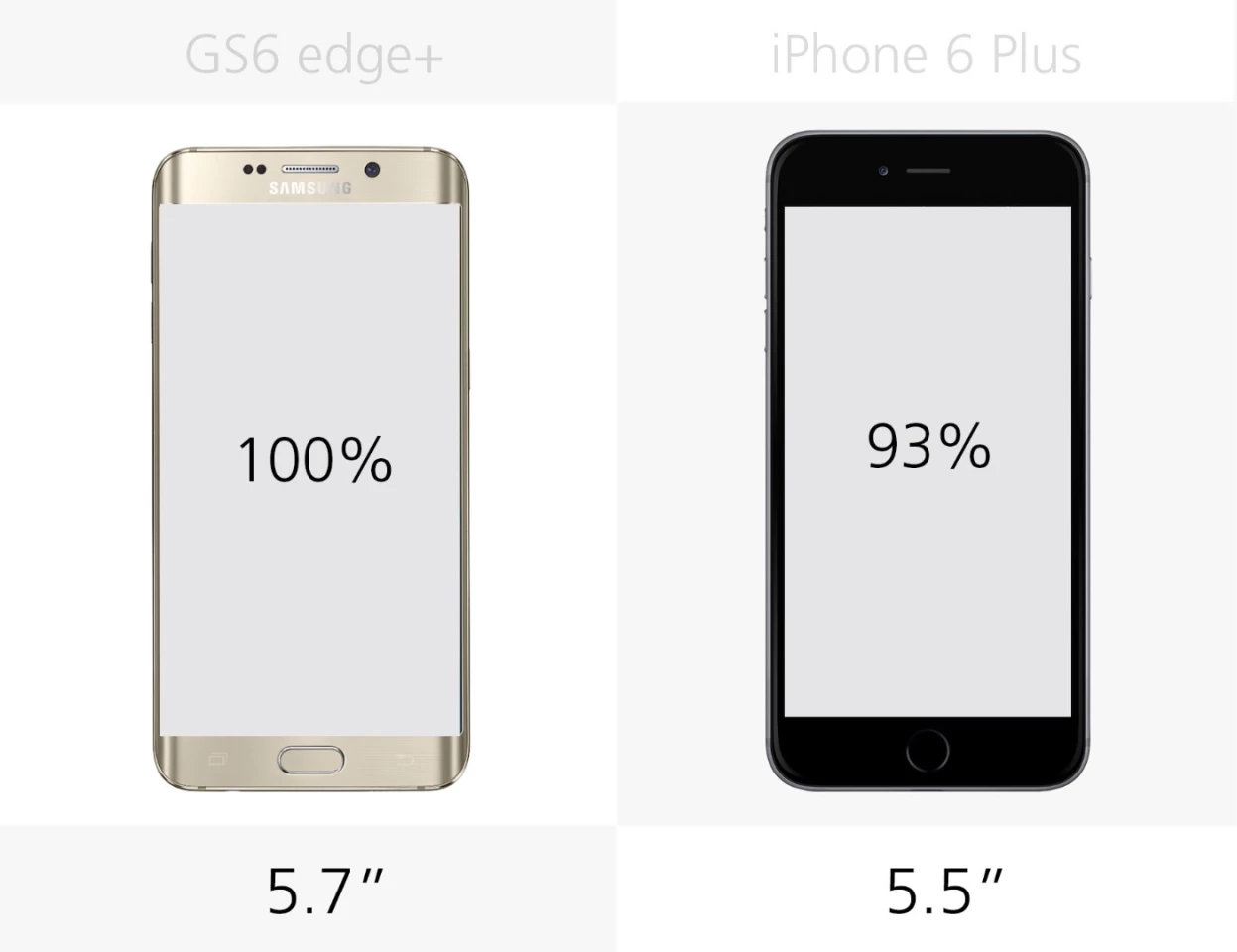
The Galaxy S6 edge+ has a 7 percent bigger screen. With the surface area of its face measuring about 5 percent smaller, it (again) gives you more screen-size for less phone-size.
Display resolution
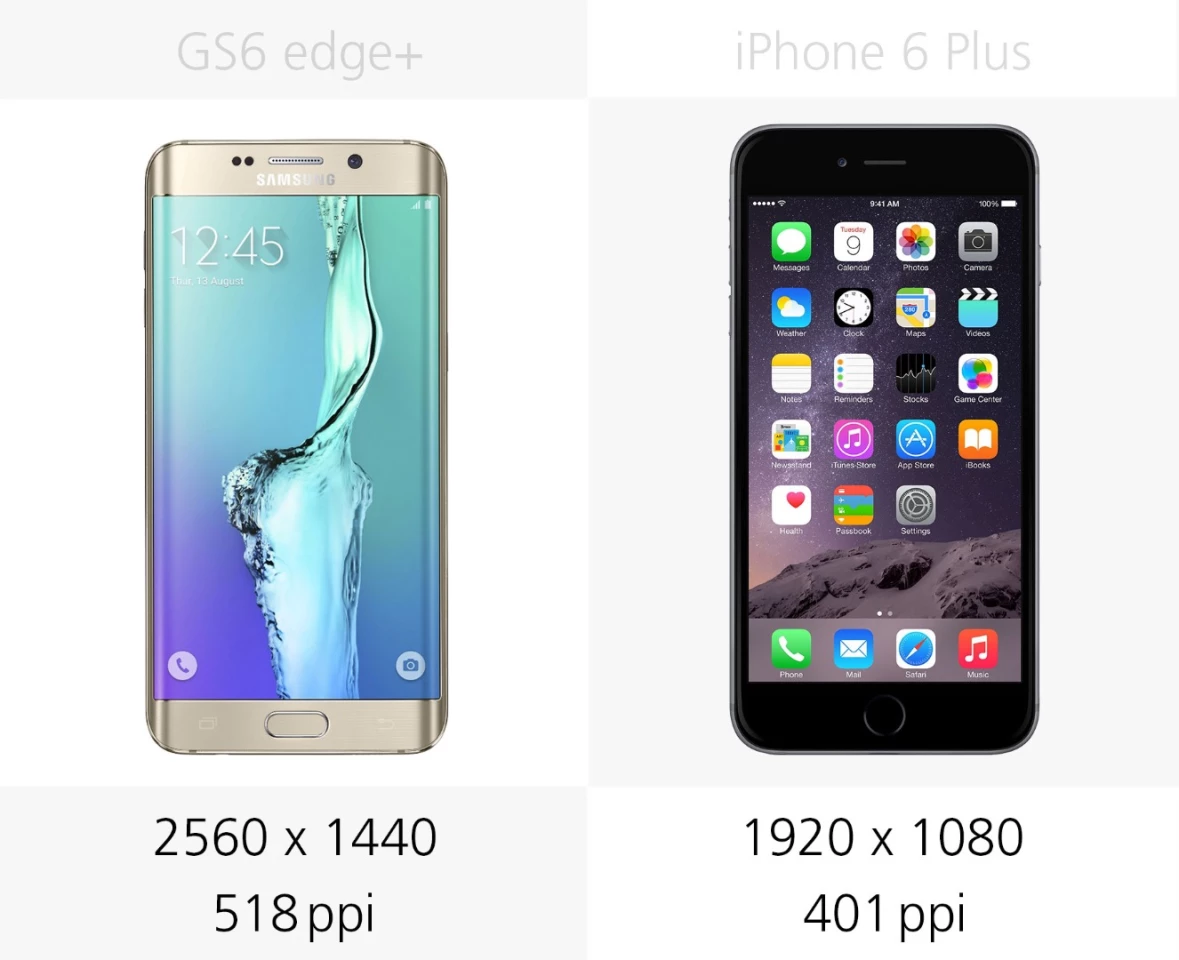
We find the Galaxy S6 edge+'s Quad HD display to look noticeably sharper than the iPhone's. Incidentally, the Edge+'s screen is our pick for the best overall smartphone display at the moment.
Display type
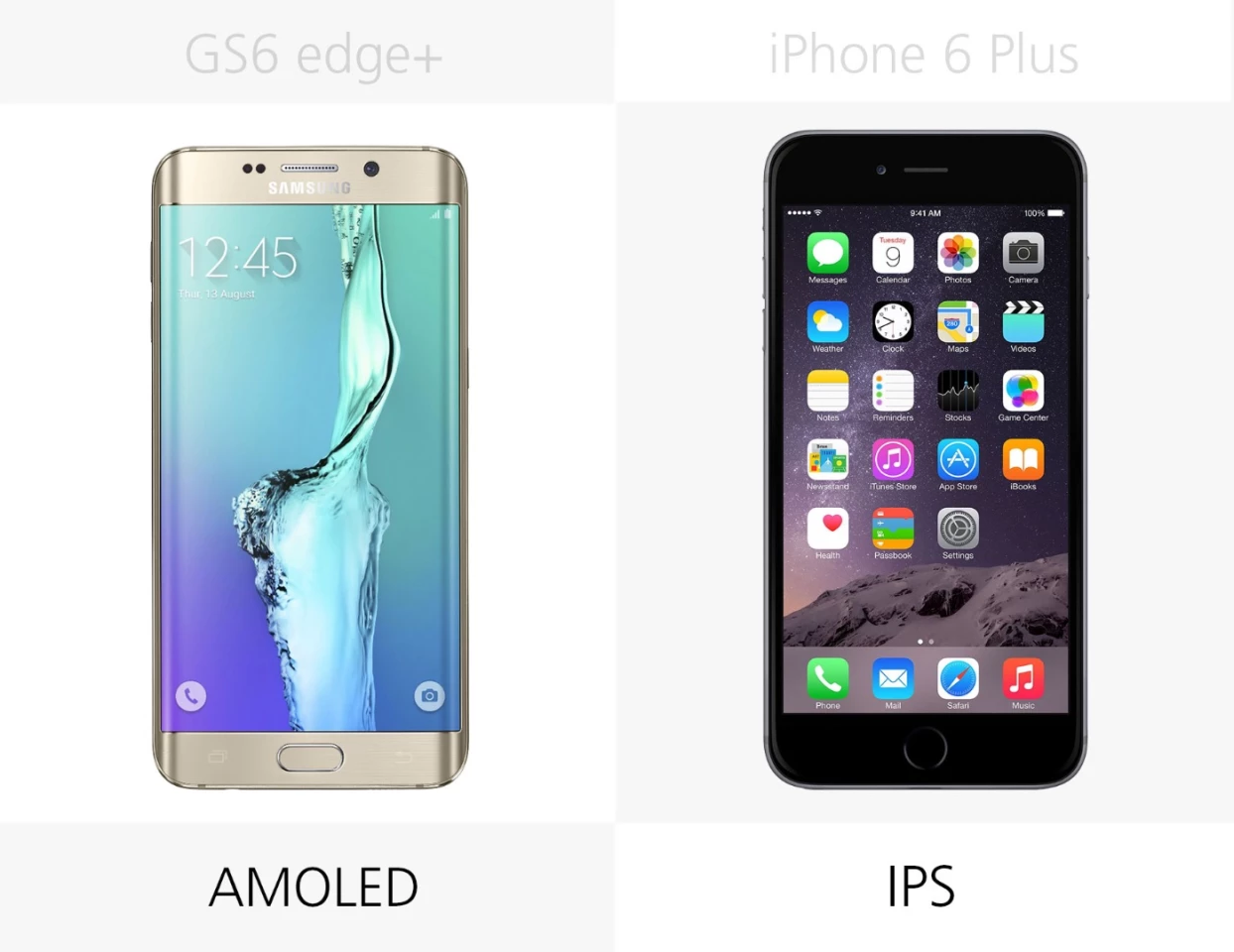
The Edge+ has an AMOLED display, while the iPhone's is an IPS panel.
Curved display

The Edge+ gets its name from its curved display, which slopes off on either side.
Samsung is selling the dual-curved screen's supposed functional advantages, like quick-access shortcuts for favorite apps and contacts. But we find it to be primarily a cosmetic perk (albeit a significant one).
Fingerprint sensor
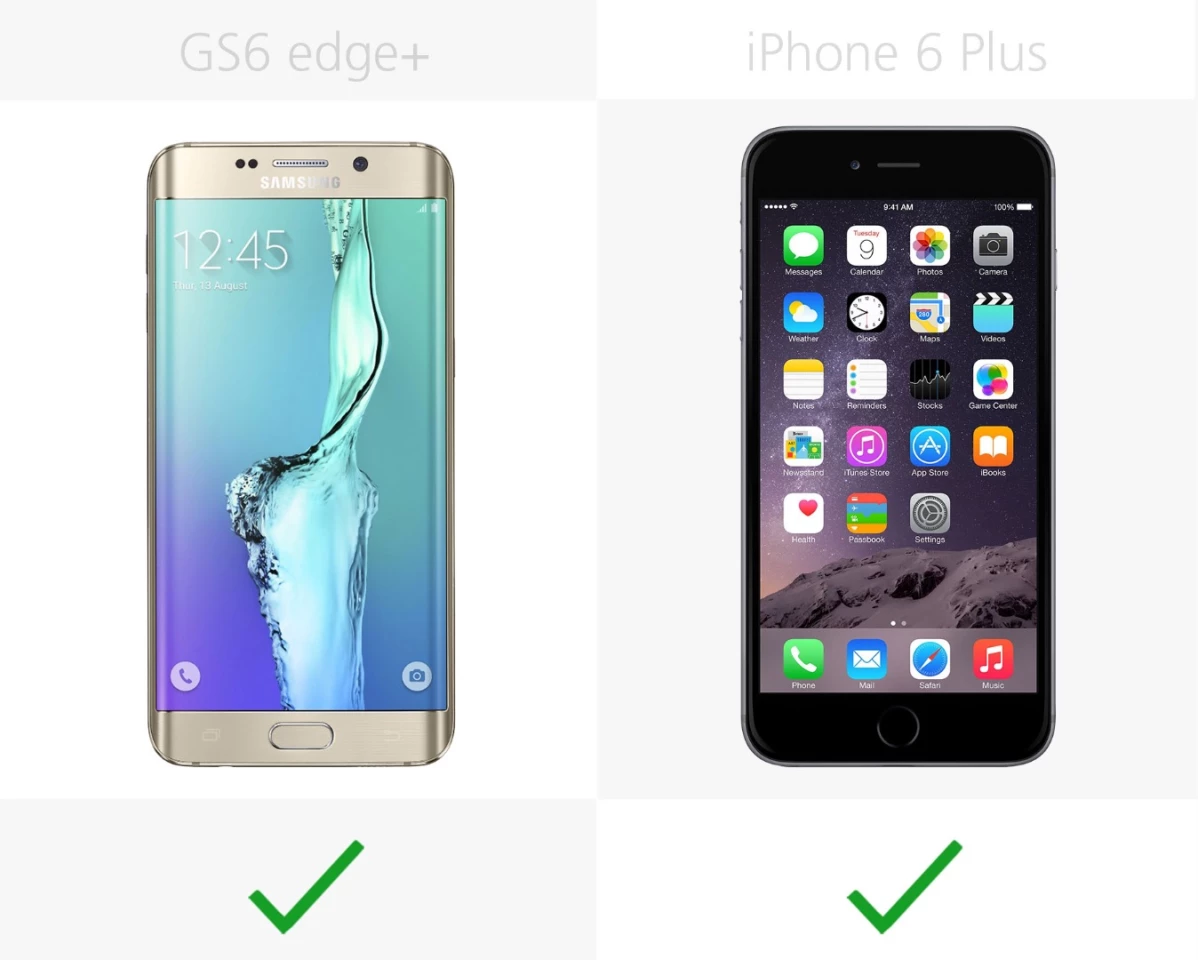
Both handsets have easy-to-use and reliable touch-based fingerprint sensors.
Storage

The entry-level Galaxy S6 edge+ gives you double the storage of the entry-level iPhone, though Apple's handset does max out on a higher (128 GB) tier.
MicroSD

iPhones have never supported microSD cards, but this is the first year Samsung has dropped them from its flagships.
Processor

Both phones have zippy performance, but just remember that we're looking at Apple's 2014 chip vs. Samsung's from this year.
RAM

The Edge+ quadruples the iPhone's 1 GB of RAM.
Battery

Based on our tests, battery life is similar on both handsets.
Fast charging (wired)
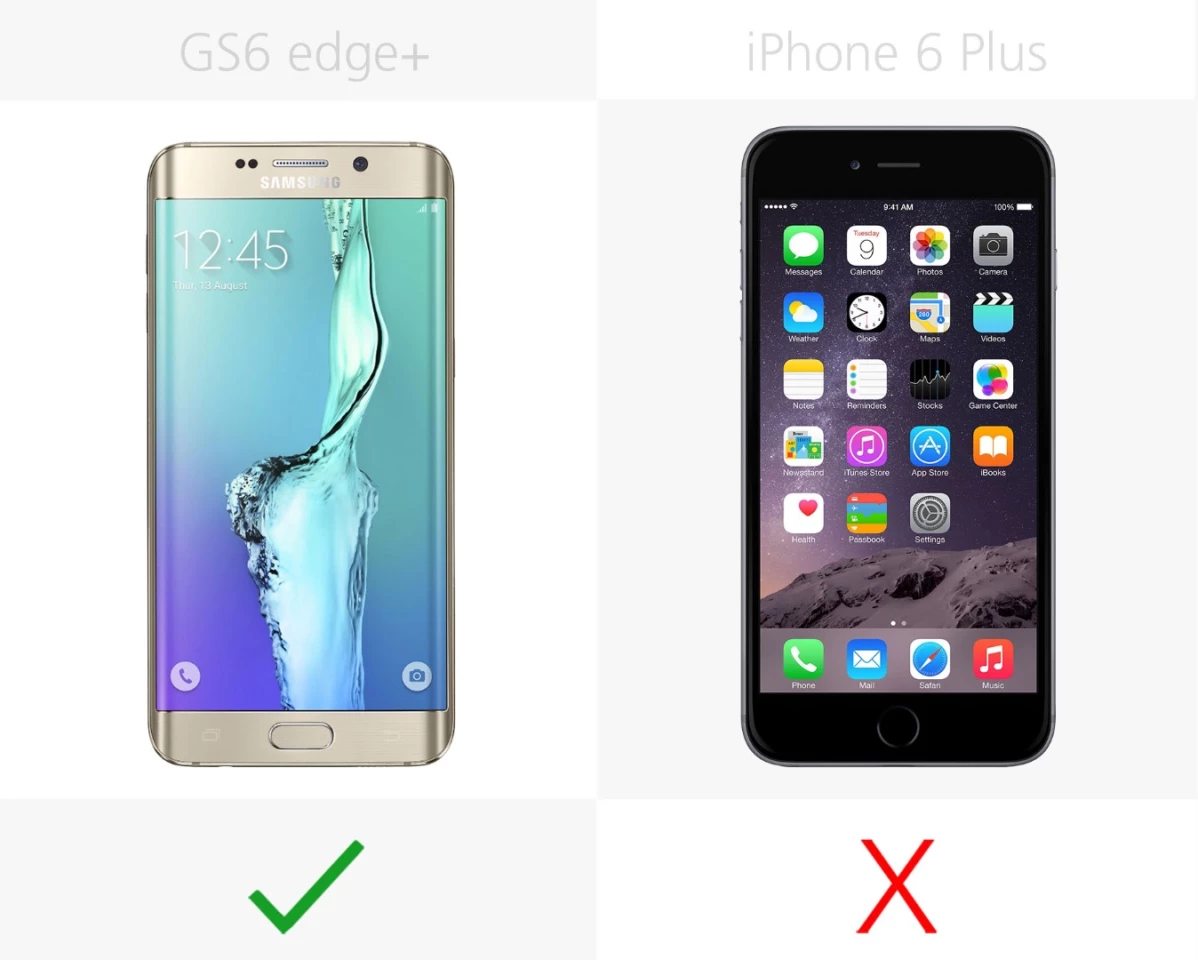
The Galaxy S6 edge+ has a nifty fast-charging feature, that can juice it up pretty quickly when using the stock cable.
Wireless charging

The Edge+ also has built-in wireless charging, including fast wireless charging – as long as you buy a US$70 Samsung-made charging pad.
Camera megapixels
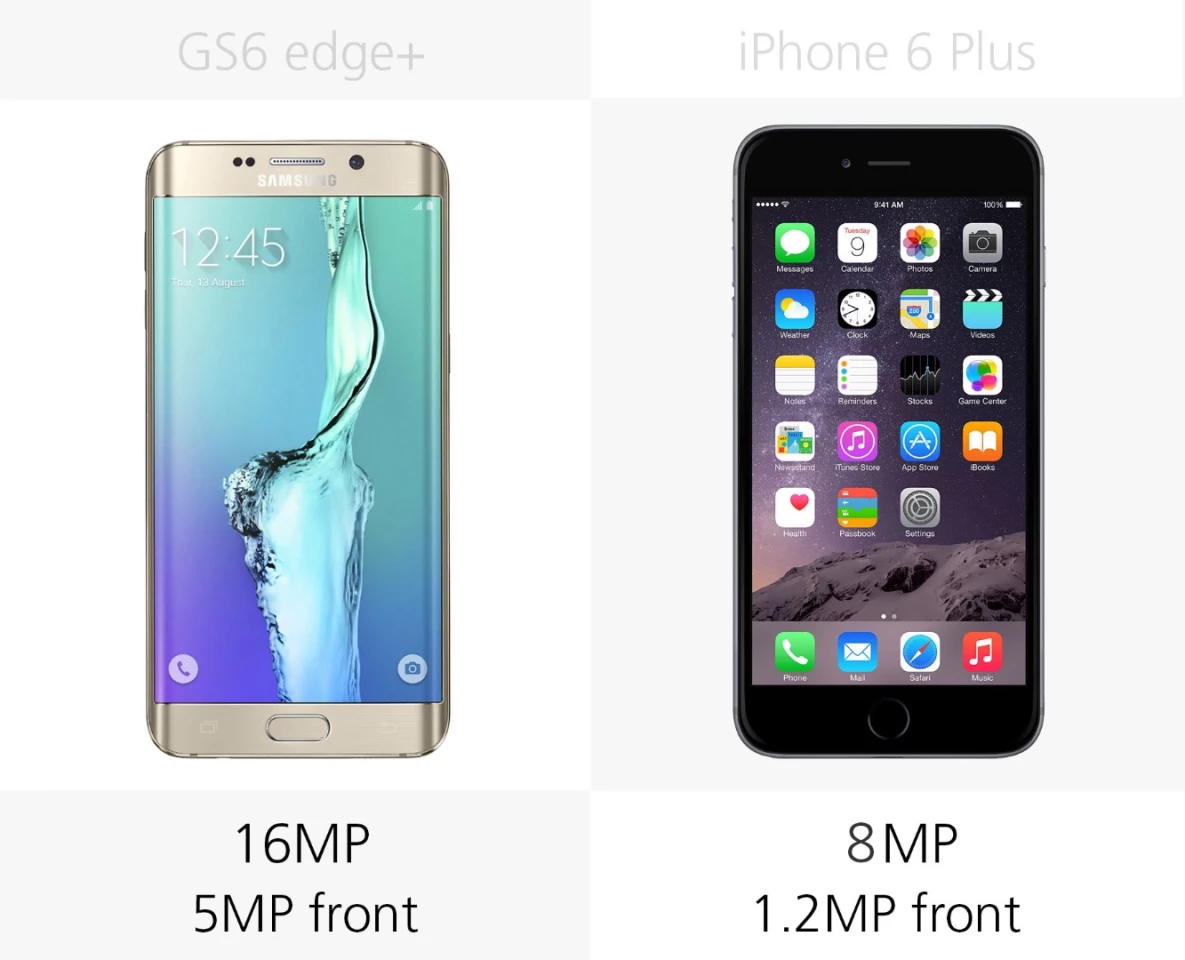
Both phones have excellent cameras, with the edge going to the Edge. But again, we should be hearing about a new iPhone with improved cameras very soon.
Camera aperture (rear)

The Galaxy's rear camera has wider aperture.
Physical camera shortcut
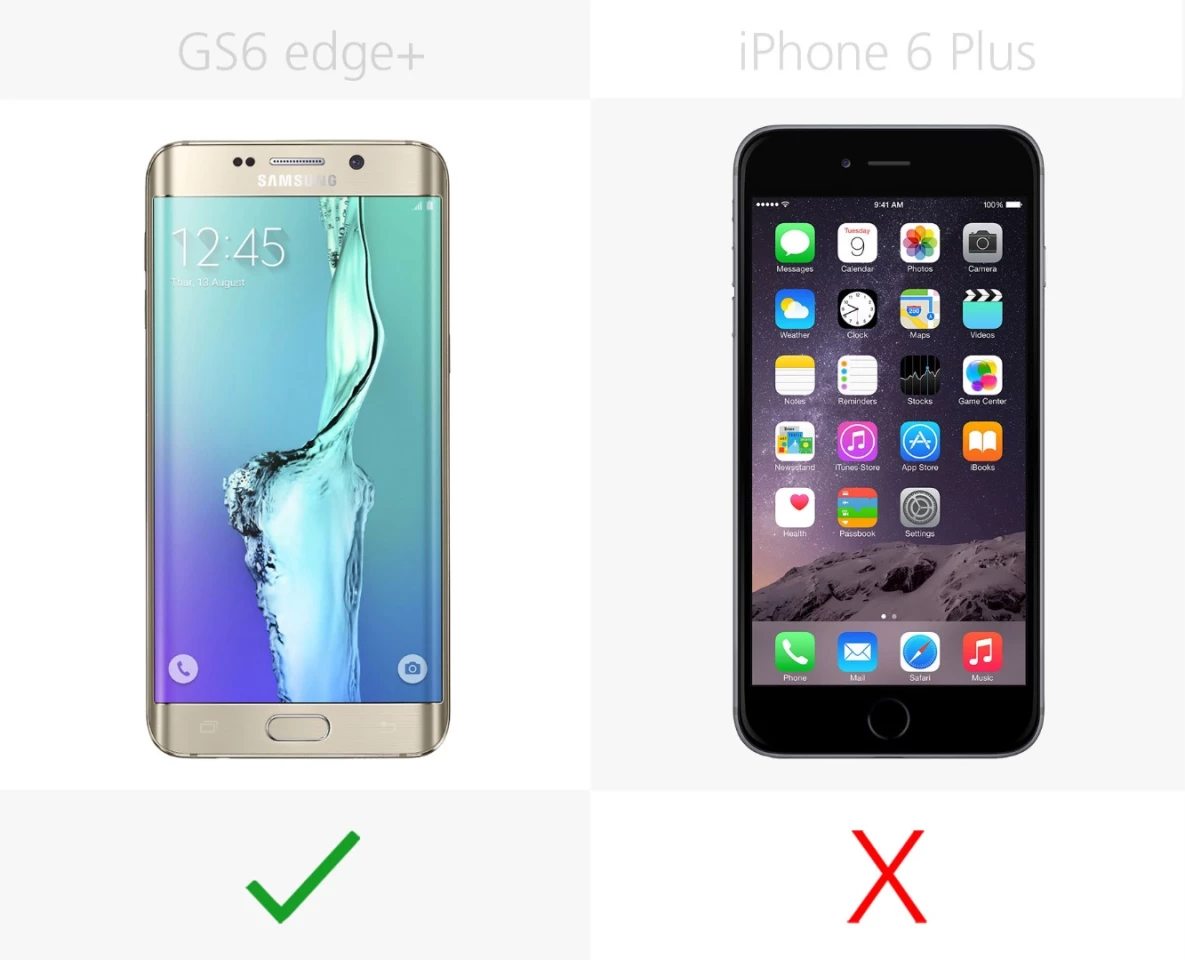
One of Samsung's simplest changes to its 2015 flagships was one of its best: you can launch their cameras with a quick double-tap of the home button.
Mobile payments

Around a year after Apple Pay launched, Samsung will be launching its oh-so creatively titled Samsung Pay.
If all works as promised, though, Samsung Pay will have a huge advantage: it can work with standard credit card readers, making it nearly universally accepted from Day One.
Software

The S6 edge+ has Android Lollipop at its core, with Samsung TouchWiz layered on top. The iPhone will run iOS 8 for another week or so, soon to be replaced by iOS 9.
Release

This is a terrible time to buy the iPhone 6 Plus (at least at anything close to full price) as Apple will be telling us about new models on September 9. The real comparison to watch will be between the S6 edge+ and the new iPhone phablet (likely called the iPhone 6s Plus, with an identical exterior to this 2014 model).
Starting price (full retail)

It's worth repeating: don't buy the iPhone 6 Plus at this price (or close to it) right now.
For much more on these two, you can hit up Gizmag's full reviews of the Galaxy S6 edge+ and iPhone 6 Plus.
Correction: The article originally listed the wrong resolution for the iPhone's rear camera.









